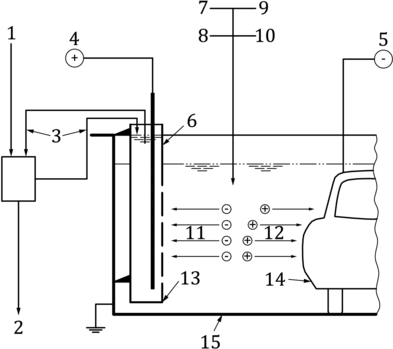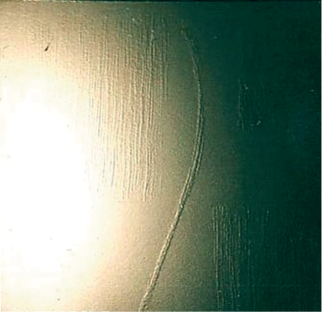ISO 22553-1- Paints and varnishes electrodeposited coatings – Part 1: Vocabulary
introduction
ISO (International Organization for Standardization) is a global federation of national standards bodies (ISO member bodies). The development of international standards is usually carried out through ISO technical committees. Each member group interested in a subject for which a technical committee has been established has the right to be represented on the Committee. International organizations, governments and non-governmental organizations in contact with ISO are also involved in this work. ISO works closely with the International Electrotechnical Commission (IEC) on all matters of electrical standardization.
Part 1 of the ISO/IEC Directive describes the procedures used to develop this document and for further maintenance. In particular, attention should be paid to the different approval criteria required for different types of ISO documents. This document has been drafted in accordance with the editorial rules of ISO/IEC Directive Part 2 (see iso.org/directives).
Please note that some elements of this document may be the subject of patent rights. ISO is not responsible for identifying any or all such patents. Details of any patent rights identified during the development of the document will be found in the introduction and/or list of ISO Patent declarations received (see iso.org/patents).
Any trade names used in this document are provided as information for the convenience of the user and do not constitute an endorsement.
ISO 22553-1- Paints and varnishes electrodeposited coatings – Part 1: Vocabulary
Voluntary interpretation, related standards and conformity assessment related ISO specific terminology and express the meaning of and the ISO in the technical barriers to trade (TBT) adhere to the principle of the world trade organization (WTO) information, please see the iso.org/iso/foreword.html.
This document was prepared by Technical Committee ISO/TC 35, Paints and Varnishes, Subcommittee SC 9, Common Test Methods for paints and varnishes.
A list of all the parts in the ISO 22553 series can be found on the ISO website.
Any feedback or questions on this document should be referred to the user’s national standards body. A complete list of these institutions can be found at iso.org/members.html.
introduce
In the electrodeposition coating process, the non-volatile substances in the water-dilutive electrodeposition coating are deposited on the workpiece by the electrophoretic process. During this process, the internal and external areas of the workpiece, including all cavities, are touched. Cathode deposition or anode deposition is distinguished according to whether the workpiece is used as cathode or anode. The cathodic electrodeposition coating process is commonly used (see Figure 1).
Figure 1 – Example of the deposition process during cathodic electrodeposition coating

ISO 22553-1- Paints and varnishes electrodeposited coatings – Part 1: Vocabulary
Key
| 1个 | Softening water | 9 | solvent |
| 2个 | Wastewater treatment | 10 | Softened water |
| 3个 | Anodic fluid cycle | 11 | acid |
| 4个 | Anode | 12 | Electrodeposition coating |
| 5个 | Cathode | 13 | Ion selective membrane |
| 6个 | Anode box | 14 | body |
| 7 | Binder | 15 | Cathodic electrophoresis cell |
| 8个 | pigment |
Through the combination of adhesives, pigments and deposition processes, hardening creates a very corrosion-resistant coating on the workpiece, which contributes significantly to corrosion protection in both internal and external areas.
The electrical properties of the material are also important for the electrical energy consumption (bulk charge density) of the process.
Since the electrophoretic paint is jointly responsible for the overall appearance of the coating system, it is often emphasized that the coating works well and has no visible defects.
Therefore, for extensive corrosion protection and sealing of the workpiece, additional joint sealing materials, adhesives or foams are recommended.
Inside the electrophoresis tank, bacterial contamination may be present due to the material being dragged in and the physical conditions (heat, water-based media, carbon sources, etc.).
This document specifies the terms and definitions of electrodeposited coatings. The subsequent part of the ISO 22553 series specifies methods of characterization and testing of electrodeposited coatings. An overview of the test methods is given in Annex A.
ISO 22553-1- Paints and varnishes electrodeposited coatings – Part 1: Vocabulary
1 Scope of Application
This document defines the terms for electrodeposited coatings.
It is suitable for electrodeposition coatings in the automotive industry and other general industrial applications, such as chiller, consumer goods, radiators, aerospace, agriculture.
2 Normative reference documents
There are no normative references in this document.
3 Terms and definitions
3.1 Volume charge density ρ
Quotient of charge Q and volume V, as shown in the formula:
Paints and varnishes – electrodeposited coatings – Part 1: Glossary Diagram 2
Note 1: The volume charge density is expressed in coulombs per cubic meter (C/m 3).
Article Note 2:1 C/m 3 = 1 A⋅s/m 3.
3.2 Deposition voltage u
The voltage is adjusted on the corresponding device to deposit an electrodeposited coating material (3.9) by an anode or cathode method, having a film thickness specified for the coating material
Note 1: The deposition voltage is measured in volts (V).
3.3 Deposition time
The time required to obtain the desired film thickness
3.4 Anode electrodeposition coating process
Anodic electrophoresis process
A variant of an electrodeposited coating in which the coated components are connected as an anode and the reverse electrode is connected as a cathode
3.5 Pigment content, determined by ashing
Mass fraction of residue after ashing of the product under specified conditions
Note 1: It includes inorganic pigments, fillers, and other solid components of the product that do not evaporate under test conditions, but their state may change.
3.6 Baking Process
The final drying and chemical crosslinking process of the applied paint film is initiated by heating
ISO 22553-1- Paints and varnishes electrodeposited coatings – Part 1: Vocabulary
3.7 Baking loss
Volatiles released under standard baking conditions
Note 1: Baking loss includes reaction loss.
3.8 Entry Tags
Visible defects that occur during the immersion of the panel under voltage, usually in the form of streaks parallel to the bath surface on the object to be painted
Example:
Hash marks (see Figure 5), pinholes (see Figure 4), mappings (see Figure 3).
3.9 Electrodeposited coatings
Electronic coating
Waterborne coatings for electrophoretic coating
3.10 Deposition time
The time that voltage is applied between anode and cathode during the coating process
3.11 Flores
Flower-shaped craters, formed by a combination of single craters
Entry Note 1: See Figure 2 for an example.
Figure 2 – Flores’ example
ISO 22553-1- Paints and varnishes electrodeposited coatings – Part 1: Vocabulary

3.12 Edge protection
The ability to protect edges from corrosion
Article Note 1: Edges may be produced by drilling, punching, and cutting.
3.13 Edge corrosion
Corrosion due to inadequate edge protection (3.12)
Article Note 1: Edges may be produced by drilling, punching, and cutting.
3.14 Cathode electrodeposition coating process
Cathodic electrophoresis
A variant of an electrodeposited coating in which the coated parts are connected as a cathode and the reverse electrode is connected as an anode
ISO 22553-1- Paints and varnishes electrodeposited coatings – Part 1: Vocabulary
3.15 Bacteria count
Colony count
The number of colony forming units (CFU) to form a macroscopically countable colony
3.16 Mapping
Local differences in film thickness in electrodeposited films
Entry Note 1: See Figure 3 for an example.
Figure 3 – Mapping example

ISO 22553-1- Paints and varnishes electrodeposited coatings – Part 1: Vocabulary
3.17 Pinholes
The holes in the coating extend all the way to the substrate
Article Note 1: Pinholes are often mixed with craters.
Entry Note 2: See Figure 4 for an example.
Figure 4 – pinhole example

3.18 Hash tag
Hydrogen attached during the process causes characteristic depressions in the electrodeposited coating
Item Note 1: One characteristic of the pound sign is the direction of the horizontal line. In particular, hash marks appear when the specimen is heavily impregnated.
Entry Note 2: See Figure 5 for an example. A distinct hash mark can be detected on the right side that has been moistened with softening water. On the left side of the department, there are significantly fewer hash marks.
ISO 22553-1- Paints and varnishes electrodeposited coatings – Part 1: Vocabulary

3.19 Stability
Electrodeposited coatings are often exposed to the aging process, especially during extended downtime (holidays, downtime, etc.), such as:
– evaporation of water, solvents and neutralizers;
– Chemical changes in adhesives caused by air;
— bring in bacteria;
– Other reactions of the adhesive
3.20 Effort
The ability of the electrodeposited coating to penetrate the box section
3.21 Workpieces
Objects coated with material
ISO 22553-1- Paints and varnishes electrodeposited coatings – Part 1: Vocabulary
Example:
Pipes, radiators, vehicles, steel test plates, magnesium and aluminum alloys, pre-treated plastics.
3.22 Rupture voltage
Electrodeposition coatings deposit a potential that is no longer controllable, for example, a significant change in film thickness, gas formation, or heat generation
Note 1: The rupture voltage can only be determined experimentally by the voltage series.
Only the standard information section is public. To see the full content, you need to purchase the standard through the official channels.
